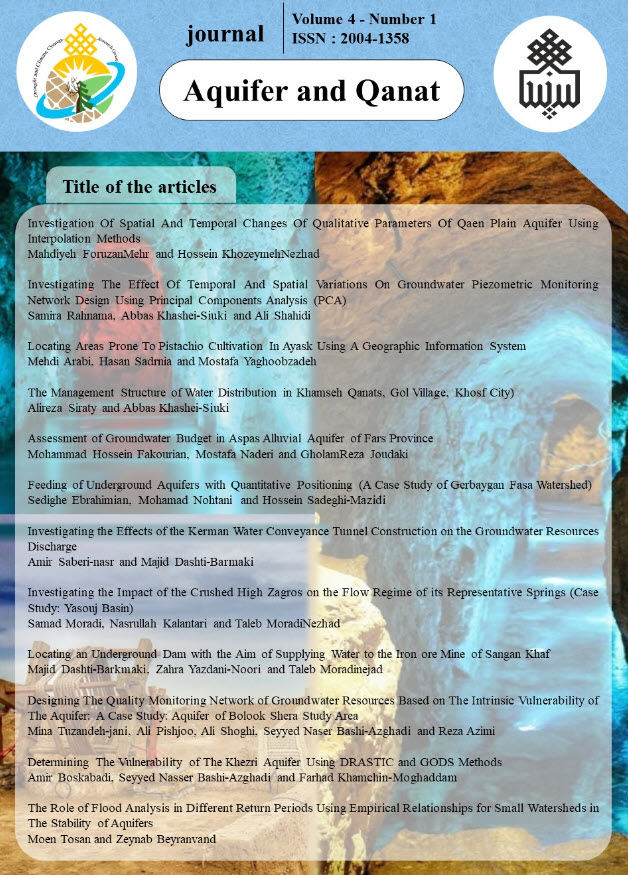Document Type : Original Article
Authors
1 MSc Graduate of Isfahan University of Technology and Expert of Toosab Consulting Engineering Company, Mashhad, Iran.
2 MSc Graduate of Ferdowsi University of Mashhad and Expert of Toosab Consulting Engineering Company, Mashhad, Iran.
3 Assistant Professor, Department of Civil Engineering and Environment, Khavaran Institute of Higher Education, Mashhad, Iran
4 PhD Graduate of University of Tabriz and Expert of Regional Water Company of Markazi Province, Arak, Iran.
Abstract
Remediation of groundwater quality after contamination is difficult and the cost of remediation may be very high. Therefore, the improvement of water quality may not be economically possible. So, it is very important to know the areas of the aquifer that are vulnerable to pollution in order to prevent pollution and take preventive measures. In this study, using the DRASTIC method, the sensitivity and vulnerability of the Bolook Shera aquifer has been evaluated, and based on the output of the model and the quality zoning maps of the aquifer, the priority areas for protection and monitoring have been identified and the basic quality monitoring network of the aquifer has been designed. The results of the Drastic model show that the vulnerability of the Bolook Shera aquifer varies between 98 and 150. The vulnerability of this plain is in the "very low" to "moderate to high" vulnerability categories. Finally, based on the results, 20 groundwater quality monitoring stations have been determined. In locating the monitoring stations, as much as possible, it has been tried to consider the water quality changes.
Keywords
Main Subjects

